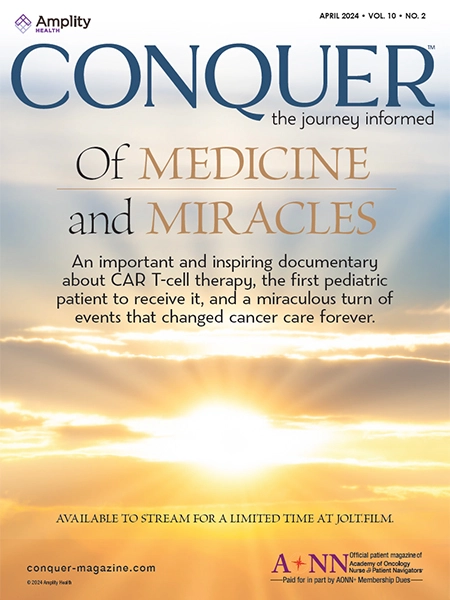Survivorship
Turn a Survivorship Care Plan into a Survivorship LIFE Plan
Lillie D. Shockney, RN, BS, MAS, HON-ONN-CG
Although the requirements to provide a cancer survivor a treatment summary and survivorship care plan have been in place for several years, with 2015 being the required timeframe for officially demonstrating that these medical records are being provided, most institutions are still not ready.
Cancer Survivorship Training, Inc.
Jennifer R. Klemp, PhD, MPH, MA
With the expanding role of navigation across the cancer control continuum, standardization of education and a certificate of competency are essential. The current landscape includes high-quality education through in-person didactic and online learning that may provide the navigator with increased competency, continuing education units (CEUs), access to consensus-recommended best practices, and limited evidence-based guidelines.
Developing and Implementing a Long Term Cancer Survivorship Program: Part II of a 2 Part Series
Lillie D. Shockney, RN, BS, MAS, HON-ONN-CG
The need to train PCPs, gynecologists, primary care NPs, internal medicine providers and others who are in the community setting and caring for patients for their chronic illnesses or to promote wellness is paramount to a cancer survivorship program functioning well.
Developing and Implementing a Long Term Cancer Survivorship Program: Part I of a 2 Part Series
Lillie D. Shockney, RN, BS, MAS, HON-ONN-CG
As we continue to see more cancer patients diagnosed, treated and thankfully surviving their cancers, we also are experiencing a decrease in the number of individuals choosing oncology as their medical specialty.
Helping Cancer Patients Make the Transition from Acute Treatment to Chronic Treatment and Long-Term Survivorship Care
Lillie D. Shockney, RN, BS, MAS, HON-ONN-CG
From the moment a patient learns she has cancer through the decision-making process to determine the definitive treatment and execution of that acute treatment plan, the nurse navigator has been at this patient’s side. But what happens during surgery, chemotherapy, and radiation treatments?
Cancer Survivorship Issues to Be Addressed and Incorporated into the Infrastructure of Cancer Care
Lillie D. Shockney, RN, BS, MAS, HON-ONN-CG
The National Institutes of Health (NIH) estimates overall costs for cancer in 2010 at $263.8 billion: $102.8 billion for direct medical costs (total of all healthcare expenditures), $20.9 billion for indirect morbidity costs (cost of loss of productivity due to illness), and $140.1 billion for indirect mortality costs (cost of lost productivity due to premature death).
Thank You to Our Corporate Sponsors and Alliance Partners!
-

Major Corporate Sponsor
-

Patron Corporate Sponsor
-

Patron Corporate Sponsor
-

Patron Corporate Sponsor
-

Industry Relations
Council Member -

Industry Relations
Council Member -

Industry Relations
Council Member -

National Alliance Partner
-

National Alliance Partner
-

National Alliance Partner
-

National Alliance Partner
Privacy Notice | Terms of Use
© 2009- DBA AONN+ Academy of Oncology Nurse & Patient Navigators® | PO Box 563, Cranbury, NJ 08512 |
AONN+ DBA AONN+ is a 501(c)(6) organization under federal tax guidelines. AONN+ Foundation for Learning, Inc. a 501(c)(3) organization under federal tax guidelines.
AONN+ Advantage, LLC, a wholly owned subsidiary of AONN+.


